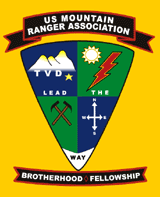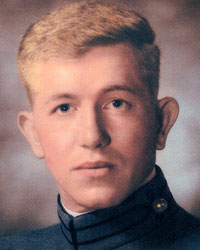

| James L. Smith |
|---|
 |
Born in Welch, West Virginia, on 5 April 1944, James Leroy Smith's early accomplishments were an indication of his later achievements. Voted president of his senior class at Pineville High School in West Virginia, he graduated in the top ten percent of the class of 1961. While attending West Virginia State College, he worked several jobs to pay his way. He enlisted as a private in the U.S. Army in September of 1963, but his real desire was to go to the U.S. Military Academy at West Point. After graduating from the U.S. Preparatory School at Fort Belvoir, Virginia in May of 1965, he received an appointment to West Point. He was voted Outstanding Company Commander of the Fourth Regiment and graduated in the top half of his class of 1969. He was commissioned 2LT of Infantry - Regular Army and after jump school he graduated from Ranger Class 6-70 on 18 December 1969. He was then stationed at Fort Bragg, North Carolina, before going overseas. On June 28, 1970, Lt. Smith was deployed to Vietnam and assigned as a Platoon Leader for Charlie Company 3/506th Infantry with the 101st Airborne Division. Upon his arrival in country, he had volunteered to serve with L Company Rangers, 75th Infantry, 101st Abn Div and his orders finally came through in early October of 1970. During his time with L Company Rangers, Lt. Smith was one of the units most well-respected and dedicated officers. Lt. Smith was always present on the helipad when any Ranger Team left for the field and likewise was there to greet the men upon their arrival back to the base camp. Lt. Smith would never miss the opportunity to shake everyone's hands and congratulate them for a job well done and safe return. Soon, "Smitty's" greetings and send-offs became a ritual for the Rangers of L Company and everyone was happy to see him at the helipad on those critical days. He was indeed a welcome sight and Lt. Smith soon gained a well-deserved reputation as a highly capable leader and someone the all men respected. His demonstrated dedication to his unit and love for his fellow soldiers was very real to all who knew him. On 16 November of 1970, Lt. Smith distinguished himself by volunteering for a harrowing rescue mission when a superior force of North Vietnamese Army surrounded one of the L Company's teams, Ranger Team Bill's. In an attempt to rescue a wounded Ranger, Lt Smith was himself severely wounded when the helicopter, which he was in, took heavy ground fire from the enemy. Enemy bullets passing through the floor of the thin skinned helicopter hit Lt. Smith in both legs. Refusing the opportunity to return home after being wounded, James Smith elected to stay in Vietnam and continue his service. Later on 15 February 1971 after recovering from the wounds sustained in the November rescue effort, Lt. Smith again volunteered to participate in another attempt to save a wounded Ranger's life during adverse weather conditions and in the middle of the night. Lt James Smith, Sgt Steve England, L Co Medic, and the Helicopter crew flew out to the Roung Roung Valley about 30 miles southwest of Camp Eagle, located in northern I Corps, Republic of Vietnam. After a brief firefight that left one Ranger severely wounded, the decision was made to attempt a night extraction in bad weather. There were still a number of NVA soldiers in the area and the wounded Ranger would not be able to keep up with the team if they had to make a run for it. Night extractions were always risky, especially when there were low-hanging clouds and mists of rain. Unfortunately, that evening the weather was getting progressively worse and fully knowing the hazards, it is to their credit that these men, including the helicopter pilots and crew, volunteered for the rescue mission. Using the abandoned US Firebase Brick as a reference point, the aircraft flew cautiously out to the team's location. When they spotted the Ranger team's strobe light flashing in the jungle below, the helicopter moved in quickly and Lt. Smith kicked out the rope. Before any remaining enemy soldiers in the area could respond, the helicopter extracted the wounded Ranger, Sgt Gabriel Trujillo, using a STABO Rig to lift him above the jungle canopy. Because of the lack of visibility and low cloud layer the aircraft was forced to make its way back very slowly. Serious trouble soon developed on board as the pilot radioed that he was unable to see the ground. He experienced what is called "Vertigo," a total loss of one's sense of direction. Unfortunately, he was unable to regain his bearings and the helicopter flew straight into the ground immediately killing everyone on board as well as the wounded Ranger dangling from the rope below. Seven men died in the crash of that UH-1H Helicopter from B Troop, 2nd Squadron, 17th Cavalry. This crash was a great tragedy for the entire unit. 1LT Smith and the other men died trying to save the life of another Ranger. All the Rangers who served with Lt. James Smith remember him vividly to this day and continue to mourn his death. Lt. Smith's deeds and selfless leadership exemplify the highest traditions of the U.S. Army Ranger creed. His name is on the Vietnam Memorial Wall at Panel 05W Line 108. He was 26 years old when he died. His Awards include the Combat Infantryman badge, Bronze star with OLC, Purple heart with OLC, Army Commendation Medal, parachutist badge and the coveted Ranger tab. In light of his service and untimely death while attempting to save one of his fellow Respectfully submitted: |